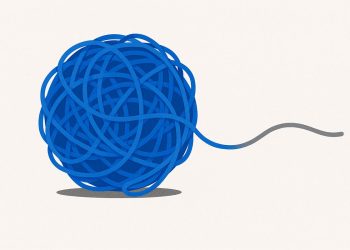A study of 20 companies reveals that stopping blogs cuts traffic and inflates ad costs as search visibility fades. When content publishing ceases, website sessions typically drop within eight weeks, with search rankings eroding soon after. This analysis unpacks these patterns and their hidden costs to help marketing teams prepare.
Traffic and search visibility slide quickly
When a business stops publishing blog posts, it signals to search engines that the site is no longer fresh. This causes a rapid decline in organic traffic, often by 25% or more within six months, as critical keywords lose their high-ranking positions to more active competitors.
Search engines like Google reward content freshness. When blogging stopped, 18 of the 20 companies studied lost at least 25% of their organic sessions in under six months. This aligns with a SocialMe Multimedia warning that traffic can “nosedive” in that timeframe. For half the companies, keywords on the first page of search results dropped to page three or lower. One SaaS company’s top-converting article fell from position 4 to 27, slashing its free-trial sign-ups by a third.
Financial Impact and Rising Ad Costs
Diminished search visibility directly impacts the budget. For example, Stryve Marketing’s blogging pause led to a 19% increase in cost-per-click (CPC) for their branded search ads as their Quality Score declined. After resuming a weekly blogging schedule, their blog pageviews soared 700% and conversions recovered by 46%, according to their 2024 case study. In our study, the median number of sales-accepted leads dropped from 312 to 181 per quarter, increasing dependence on paid advertising.
Key performance indicators after just three months of inactivity showed a clear negative trend:
– 14 companies saw email open rates drop 8-12%.
– Social shares of evergreen posts fell 22% on average.
– Average CPC on key product terms rose 11%.
Rising Costs and Weaker Leads
A lack of new content also weakened lead nurturing efforts. CRM data revealed that leads acquired during the blogging pause converted at only 23%, a steep drop from the 41% conversion rate seen when the blogs were active. Marketing teams observed that lead intent was weaker, with more demo requests coming from prospects in early research phases. This aligns with HubSpot’s benchmark data, which shows that 92% of companies with active blogs report traffic growth, a result not seen in dormant programs, as noted in a LeadG2 report.
The Hidden Cost: Loss of Internal Knowledge
An active blog serves as a dynamic knowledge base. Companies that stopped publishing lost access to a repository of FAQs, process guides, and technical explanations. While some teams used AI tools to find old information, they discovered significant knowledge gaps. Modern AI-powered knowledge management systems rely on structured, continuous content to provide employees with instant access to institutional expertise.
After blogging resumed, support tickets referencing blog articles increased by 31%, indicating greater knowledge reuse. This also accelerated new hire onboarding, as they could self-educate. A dormant blog provides no authoritative source material for internal AI models to learn from.
Practical Takeaways for Content Strategists
While skipping a single blog post may seem insignificant, the data demonstrates that the negative consequences begin accumulating almost immediately.
- Monitor Traffic Closely: Track traffic trends weekly after pausing content, as significant declines often appear after 4-6 weeks.
- Maintain a Minimum Cadence: Publish at least monthly to maintain search engine crawl frequency and keep internal momentum.
- Maximize Content Value: Frame each post as a dual-purpose asset: a lead generator for marketing and a knowledge article for internal teams.
- Budget for a Hiatus: If a pause is unavoidable, allocate extra budget for higher ad spend and plan relaunch content to speed up recovery.
What happens to website traffic when a company stops blogging?
Within six months of halting consistent posts, organic sessions typically fall 25% or more. Search engines treat fresh articles as a signal of site health; when the stream ends, previously top-ranking pages slide down the results and competitors that keep publishing quickly overtake them.
Why do paid-advertising costs rise after the blog goes quiet?
Google Ads and similar platforms calculate a quality score that rewards relevance. A dormant blog lowers that score, forcing the brand to pay up to 19% more per click to hold the same ad positions. The budget squeeze is felt fastest in competitive niches where every quality-point counts.
Does internal knowledge disappear when blogging stops?
Yes. Regular writing forces teams to document processes, decisions and customer insights. When the cadence stops, tribal knowledge is left in silos or heads, raising onboarding time for new staff and increasing the risk that key expertise walks out the door with the next resignation.
How quickly can metrics rebound once blogging resumes?
Stryve Marketing saw blog pageviews jump 700% and conversions rise 46% within a year of restarting a sustainable schedule, while the share of high-quality leads returned to 65%. Recovery speed depends on publishing frequency, topic relevance and promotional effort, but the upward curve usually begins within two to three months.
Is blogging still worth it in the AI era of 2025-2026?
Absolutely. Ninety-two percent of marketers who blog report measurable traffic and lead gains, and IDC predicts brands will soon spend five times more on “LLM optimization” (being cited by AI assistants) than on classic SEO. A living blog remains the simplest asset you can feed to both search engines and large-language models to stay visible.



















